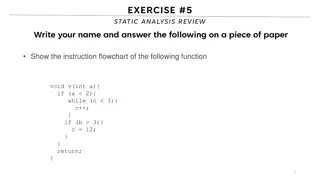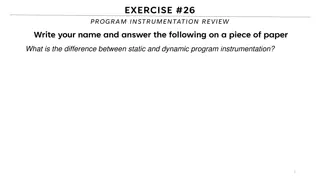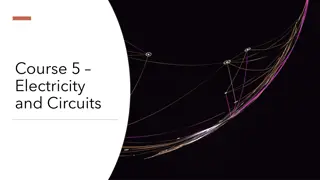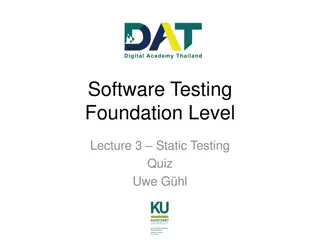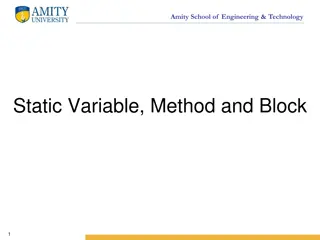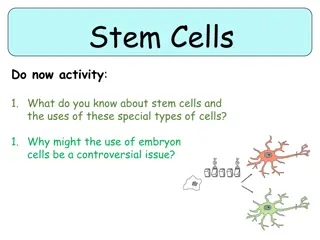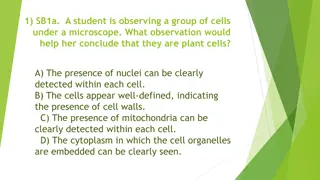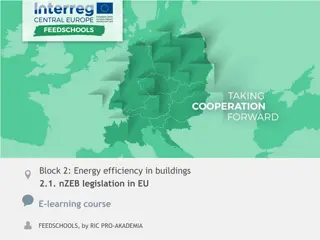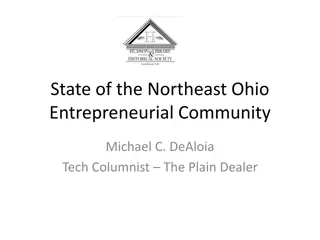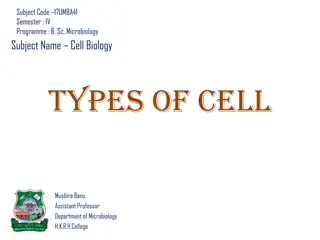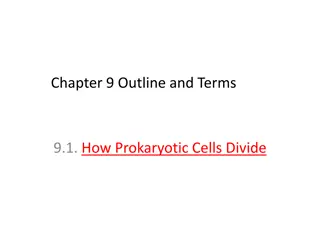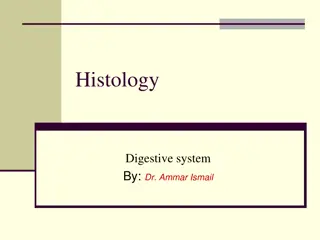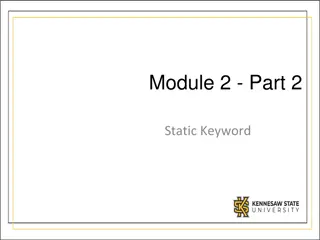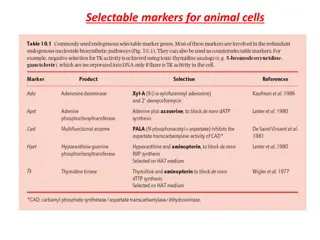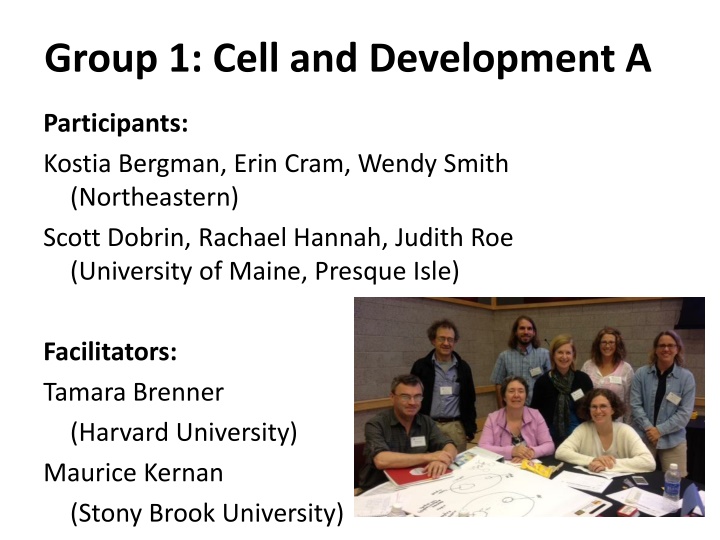
Exploring Cellular Development and Maintenance in Intermediate Cell Biology Course
This content outlines a unit on cell and development for an intermediate Cell Biology course. It covers basic cell structure, tools for cell study, tissue composition, and cellular specialization. Students will understand the interrelation of structures and functions within cells while learning to compare and identify dynamic maintenance processes. The unit fosters inclusive teaching practices accommodating diverse perspectives and learning styles, culminating in formative and summative assessments to gauge student comprehension and critical thinking skills.
Download Presentation

Please find below an Image/Link to download the presentation.
The content on the website is provided AS IS for your information and personal use only. It may not be sold, licensed, or shared on other websites without obtaining consent from the author. If you encounter any issues during the download, it is possible that the publisher has removed the file from their server.
You are allowed to download the files provided on this website for personal or commercial use, subject to the condition that they are used lawfully. All files are the property of their respective owners.
The content on the website is provided AS IS for your information and personal use only. It may not be sold, licensed, or shared on other websites without obtaining consent from the author.
E N D
Presentation Transcript
Group 1: Cell and Development A Participants: Kostia Bergman, Erin Cram, Wendy Smith (Northeastern) Scott Dobrin, Rachael Hannah, Judith Roe (University of Maine, Presque Isle) Facilitators: Tamara Brenner (Harvard University) Maurice Kernan (Stony Brook University)
Context Unit for an intermediate Cell Biology course Placed near the start of the course as a springboard for further learning Students will be expected to know or review: Basic parts of the cell including plasma membrane, cytoskeletal proteins, major organelles including transport vesicles Tools for studying cells Requirement of energy for cellular processes Students will have had previous experience reading primary literature
Learning Goals for the Unit Students will understand: 1. Tissues are composed of specialized cells 2. Structures and functions of cells within tissues are interrelated 3. Cellular specialization depends upon adjacent cells and matrix 4. Maintenance of cellular structure involves dynamic processes
Learning Objectives Students will be able to: 4a. Compare cells and buildings with regard to processes required for maintenance and repair 4b. Identify at least 2 dynamic processes required to maintain and repair non-motile, non-dividing cells 4c. Design an experiment to visualize dynamic maintenance processes in cells
Assessment Formative assessments, of increasingly higher-order: Pair brainstorming Jigsaw pair-shares 1-minute paper Homework Summative assessment Homework could be graded Creation of exam question similar to homework that interprets a dynamic cell process shown in a primary literature paper Creation of take home exam question that students must design a series of experiments to test hypotheses related to unit
Inclusive Teaching Students bring diverse perspectives to the concept of building maintenance and repair Activities accommodate multiple learning styles Activities promote participation by different personality types Minimal cost
STATIC IS DYNAMIC STATIC IS DYNAMIC
Cells vs. Buildings Cells vs. Buildings maintenance and repair Partner Brainstorm 1. Pair up by color Yellow: cells OR Blue: this building 2. List or sketch dynamic processes needed to maintain non-motile cells or buildings Make sure each person has a list or sketch to take with them for the next step!
Cells vs. Buildings Cells vs. Buildings maintenance and repair Jigsaw Pair-Share 1. Find a partner of the opposite color (Cell x Building) 2. Share your drawing or list with your new partner 3. Compile one shared cellular maintenance and repair list, inspired by discussion 4. Report to the class one dynamic process needed for cellularmaintenance or repair
1 1- -Minute Paper: Cells Minute Paper: Cells Write a 1 minute paper articulating the strongest analogy between dynamic processes in cells and buildings, and your reasons for choosing it. Hand in paper at the end of class.
Vesicle trafficking: a dynamic cell process vesicles This cell is expressing a GFP- tagged membrane protein This allows us to watch vesicles moving to the cell membrane and delivering their cargo of lipids and proteins. Modified from: Kreitzer et al., 2003. Three- dimensional analysis of post-Golgi carrier exocytosis in epithelial cells. Nature Cell Biology 5: 126-136. membrane
Investigate Dynamic Cell Processes Investigate Dynamic Cell Processes Homework On Your Own (OYO) 1. Read the assigned paper investigating a dynamic cellular process, focusing on Figure 1. 2. Write a 1-page synopsis of Figure 1 which includes the following: hypothesis, methods, controls, variables, results, conclusion. 3. Outline an experiment using a GFP-labeled protein to study a different process identified by the class. 4. Bring typed 1 page synopsis and outline to next class.


